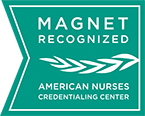Hearing your GP say that you have returned an abnormal cervical screening result can be a scary moment. Now, imagine hearing that news and waiting up to 12 months for further diagnosis and treatment?
Women on the Gold Coast won’t have to experience that, thanks to these two nurses and Gold Coast University Hospital’s nurse-led colposcopy service.
Hilary Walker (left) and Jan Gale (right) are Australia’s first therapeutic and diagnostic nurse colposcopists. A colposcopy (pronounced kol-POS-Kuh-pee) is a potentially lifesaving procedure that closely examines your cervix, vagina and vulva for signs of disease. It may include a biopsy or a LETZ (treatment for abnormal cells by removing an area from the cervix).
While nurses have been safely performing colposcopy for more than ten years in UK, Europe, USA and more recently in New Zealand, Australia was lagging.
“When I came across from the UK in 2015, I was the first diagnostic and therapeutic colposcopy nurse in Australia,” Hilary said.
“In 2017, Australia introduced primary HPV triage as a more effective method for cervical screening which dramatically increased the number of women needing colposcopy.
“With the increase in numbers, I was very keen for another nurse to be trained. We received significant funding from the Dept of Clinical Excellence, and Jan is the result.
Jan became the first Australian-trained Nurse Practitioner to complete the British Society for Colposcopy (BSCCP) training in October 2019.
“With both of us, there is now essentially no wait time to come to colposcopy. The fact that women on the Gold Coast can be seen straight away is a big achievement. Patients in other areas without a nurse colposcopy service may have to wait up to 12 months for an appointment,” Jan said.
“Women accessing colposcopy may be very anxious, so it’s great to take them through it all thoroughly, explain results, answer questions, and then treat them with complete continuity of care.
“We have now received another 12 months’ worth of funding to train one more nurse colposcopist, which is fantastic. It’s great to see the value of the model recognised and its impact on patient outcomes and waiting times.”



